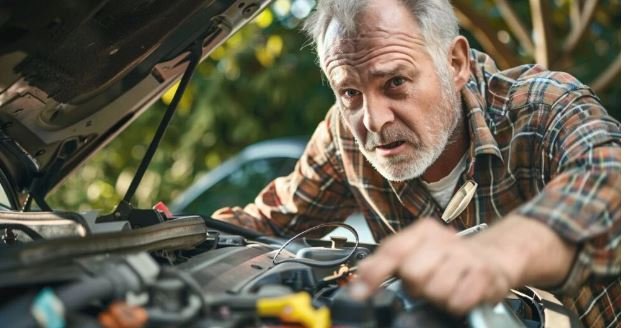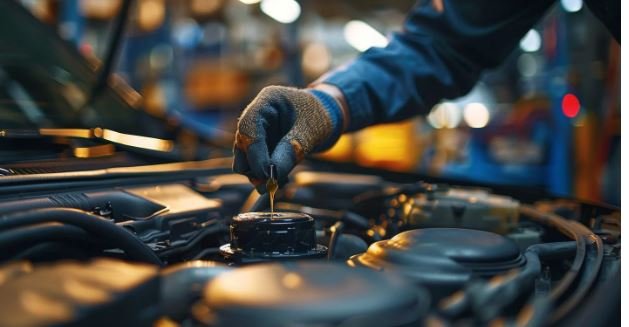Car maintenance is essential for car owners. It not only ensures your safety, but also improves your car’s reliability and performance, minimizes the risk of road accidents and increases the resale value of your car. Regular maintenance also prevents unexpected repairs, which can be very expensive. Therefore, it is important to know when maintenance work needs to be carried out. This guide explains why each part is important and when to do it. But be sure to check your vehicle’s owner’s manual to find out the individual schedule. Each car is different and the timetables may also be different.
Car maintenance schedule
There are many parts in your car that need regular maintenance, and while it’s important to know them, you also need to know which parts should be entered in a vehicle maintenance log. Some parts only need to be checked about once a year, while others need to be checked monthly. Remember: When performing any of the mentioned engine maintenance work, for your own safety, make sure your car stops running or simply take it to a trusted certified mechanic.
This is a brief automotive maintenance checklist that any owner can use:
Monthly check-up
Check the tires
Test lights
Check the oil and coolant levels
Inspect the windshield
3 month control
Change the oil
Change the oil filter
Check belts and hoses
Check the car’s battery and cables
Annual check
Replace the cabin and engine air filters
The tires are spinning
Check the brakes
Lubricate the hinges
Seasonal control
Change the tire
Windscreen wiper blade replacement
Check the washer fluid level
Monthly vehicle maintenance checklist
Taking the time each month to get your car serviced promptly can save you money and headaches later by catching potential problems early.
Check your tires
It is important to check your tires regularly. Driving with incorrect tire pressure can cause driving problems, which can make it difficult for you to turn or maintain control of your vehicle. It is therefore important to check the tire pressure monthly, but also before long car journeys or when transporting heavy goods. Don’t forget to do the same inspection for your spare tire. Every car is different. So check your car’s manual or research how much pressure your tires need. Here you will find step-by-step instructions on how to check your tire pressure manually.
When testing your tire pressure, also pay attention to the tread depth of your tires. Most new tires have a wear indicator, but you can always do a Toonie check. Put a toonie in your step – when the tread touches the bear’s paws, you’re good to go. If the silver part of the toonie is covered with a tread block, your tires are about halfway worn, and if the tread barely touches the letters “CANADA” or “DOLLARS,” it’s time to start shopping for tires.
Check all your lights
It is often overlooked that your lights need to be serviced monthly. For best results, you may need the help of a friend or family member. Test the high beams, brake lights, backup lights and turn signals, then walk around your car to see if all other lights are working properly.
Check the oil and coolant levels
After your engine has cooled, check the coolant and oil levels under the hood. If you use too little of it, it can cause engine problems. A monthly inspection or before a drive can save you from problems in the future.
Check your windshield
It’s important to keep an eye on your windshield wipers and washer fluid, especially during the winter months. Take the time each month to check the condition of your wiper blades. Look for cracks, tears or damage to the blade.
When checking your oil and coolant levels, also pay attention to the level of your washer fluid. You don’t want to go out and spend nothing, so top up as needed.
3 month vehicle maintenance checklist
Visiting your service technician quarterly or inspecting your vehicle yourself will help prevent damage that is easily preventable.
Do an oil change
Because your engine oil does so much for your vehicle, it’s important that you follow the recommended maintenance schedule. You should change the oil every three months, or approximately every 5,000 to 7,500 miles. There are several factors that can affect the frequency, for example: For example, synthetic or regular oil, but if you stick to every three months, your car will thank you.
Change your oil filter
When you change the oil, you should also change the oil filter. It protects your engine from dirt and other contaminants that can get into your oil and clog or damage your engine. Keeping it clean will keep your car running smoothly.
Check belts and hoses
Your belts and hoses don’t last forever, so checking them regularly can help prevent future problems. In either case, check for small holes, tears, or anything that looks like damage. If so, it may be time to replace them.

Check your car’s battery and cables
During your other three-month checkups, look at your battery and the cables connected to it. You may need to pull back a protective rubber cover to see where they are connected. Make sure there is no corrosion and that the cables are not starting to come loose.
Annual Car Maintenance Checklist
Annual inspections, combined with your monthly and quarterly inspections, will keep your car running smoothly and safely for longer.
Replace the cabin and engine air filters
You don’t want to inhale dirt or dust, and neither does your engine! Replacing the cabin and engine air filters will help your car perform better. A clean air filter helps your air conditioning system work more efficiently, and a clean engine filter ensures smooth acceleration and optimal engine performance.
The tires are spinning
Your tires wear over time and you want to make sure they wear evenly. This can help them last longer and even save you money in the long run. If the tread wears unevenly, the vehicle can vibrate, which can cause damage to the road.
Check your brakes
Take the time to test your brakes. Turn off your radio and listen for unusual sounds as you slow down. Additionally, removing brake dust from your brakes can slow down the wear on your brake pads from simply stopping.
Lubricate the hinges
Quivering doors are not only annoying, they are also a sign of wear and tear on the hinges. Taking a few minutes each year to apply some lube can help stop the squeaking.
Seasonal Vehicle Maintenance Checklist
As the weather changes from hot to cold and vice versa, there are a few things to keep in mind to keep you safe on the road.
Replace the tire
Winter tires should be used in place of summer or all-season tires when the temperature falls below 7°C. Using seasonal tires prolongs the life of both sets of tires in addition to improving your own safety. Rotate your tires as well when you replace them!
Change the wipers on the windshield.
Replacing your windshield wipers at the same time as your tires is a wise habit. This indicates that there are no streaks on the windshield and that you have excellent visibility year-round.
replenish washer fluid
Have you taken a road trip in the winter? As a result, becoming angry might lead to issues and hinder your ability to find speedy solutions. You have to get going and cease paying attention to stopping once you begin stopping and doing it consistently. read more


I’ll be referencing this post often.